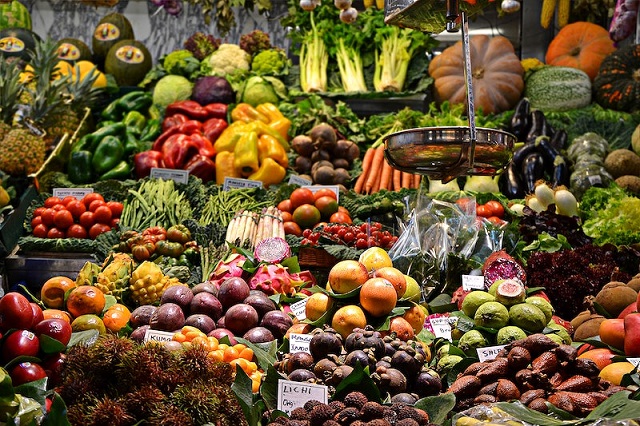How ‘ugly’ fruit and vegetables could tackle food waste and solve supermarket supply shortages
Güven Demirel, Senior Lecturer in Supply Chain Management at Queen Mary University of London, has co-written for The Conversation on how imperfect produce could tackle food waste and solve supermarket supply shortages.

The world is facing a significant food waste problem, with up to half of all fruit and vegetables lost somewhere along the agricultural food chain. Globally, around 14% of food produced is lost after harvesting but before it reaches shops and supermarkets.
Alongside food prices (66%), food waste is a concern for 60% of people that participated in a recent survey published by the UK Food Standards Agency. Other research suggests that as much as 25% of apples, 20% of onions and 13% of potatoes grown in the UK are destroyed because they don’t look right. This means that producers’ efforts to meet stringent specifications from buyers can lead to perfectly edible produce being discarded before it even leaves the farm – simply because of how it looks.
Aside from the ongoing environmental implications of this food waste, UK shoppers currently face produce rationing in some supermarkets due to shortages of items like tomatoes, cucumbers and raspberries. Any solutions that increase locally grown produce on shop shelves could improve the availability of fresh food, particularly in urban areas.
When imperfect fruit and vegetables don’t make it to supermarket shelves, it can be due to cosmetic standards. Supermarkets and consumers often prefer produce of a fairly standard size that’s free of blemishes, scars and other imperfections. This means fruit and vegetables that are misshapen, discoloured, or even too small or too large, are rejected before they make it to supermarket shelves.
In recent years there has been a growing trend of selling such “ugly” fruit and vegetables, both by major supermarket chains, as well as speciality retailers that sell boxes of wonky produce. And research has shown that 87% of people say they would eat wonky fruit and vegetables if they were available. But other research indicates consumers can still be picky and difficult to predict. One study showed consumers are likely to throw away an apple with a spot, but would eat a bent cucumber.
So how can producers and retailers boost the amount of non-standard fruit and veg that not only reaches our shelves, but also our plates? Our recent research suggests a separate channel for selling ugly produce would increase profits for growers, lower prices for consumers and boost overall demand for produce.
For growers, a dedicated channel – either independent or set up by a supermarket – to supply wonky fruit and veg creates a new line of business. For retailers, this provides an opportunity for further revenue over and above current sales of standard produce to shops. When selling both types of product to a single retailer, the ugly items might be undervalued compared with the standard-looking products. Our research also shows that selling the ugly produce through a dedicated channel is likely to increase total demand for fruit and vegetables, while also decreasing on-farm loss.
Having two parallel channels for selling produce (the main one and the dedicated “ugly” channel) would increase competition. This benefits shoppers by lowering prices for regular and ugly produce, versus selling both types of products alongside each other in one shop.
On the other hand, the growing market for ugly fruit and vegetables could be an economic threat to traditional retailers. It encourages new entrants into the market and could also limit the availability of “regular” produce because growers could become less stringent about ensuring produce meets traditional cosmetic standards.
But there is a way for traditional retailers to add ugly produce into their product offerings alongside other produce without affecting their profits. By building on existing consumer awareness of the environmental benefits of ugly food, they could also compete in this growing segment. This would benefit their bottom lines and help consumer acceptance of misshapen fruit and vegetables, possibly leading to less food waste and shortages like those UK shoppers are experiencing right now.
Boosting demand for imperfect fruit and vegetables across the supply chain will require all participants to get involved – from grower to seller. Here are some steps the various parties could take:
- Educating consumers
Education about the environmental and economic impact of food waste could happen through marketing campaigns, in-store displays and even social media. - Reducing cosmetic standards
Supermarkets and other major food retailers could revise their cosmetic standards to accept a wider range of produce, including imperfect fruit and vegetables. This would help reduce food waste by making sure more produce is able to be sold. - Direct sales
Farmers and growers could sell non-standard produce directly to consumers through farmers’ markets or subscription services. This allows consumers to purchase fresh, locally grown produce that might not meet cosmetic standards for supermarkets but that is just as nutritionally beneficial. - Food donations
Supermarkets and growers could donate produce rejected for how it looks to food banks, shelters and other organisations that serve those in need. This would help reduce food waste while also providing healthy food to those who might not otherwise have access to it. - Value-added products
Produce that doesn’t meet cosmetic standards could also be used to create other products such as soups, sauces and juices. In addition to reducing food waste, this would create new revenue streams for growers and retailers. - Food composting
Anything that cannot be sold or otherwise used should be composted. This would help reduce food waste while also creating nutrient-rich soil for future crops.
By implementing these solutions, the supply chain can reduce the amount of ugly or imperfect fruit and vegetables that are wasted, while also providing consumers with healthy, affordable produce, even in times of supply chain shortages.
This article first appeared in The Conversation on 7 March 2023.
Related items

29 November 2024

12 November 2024
